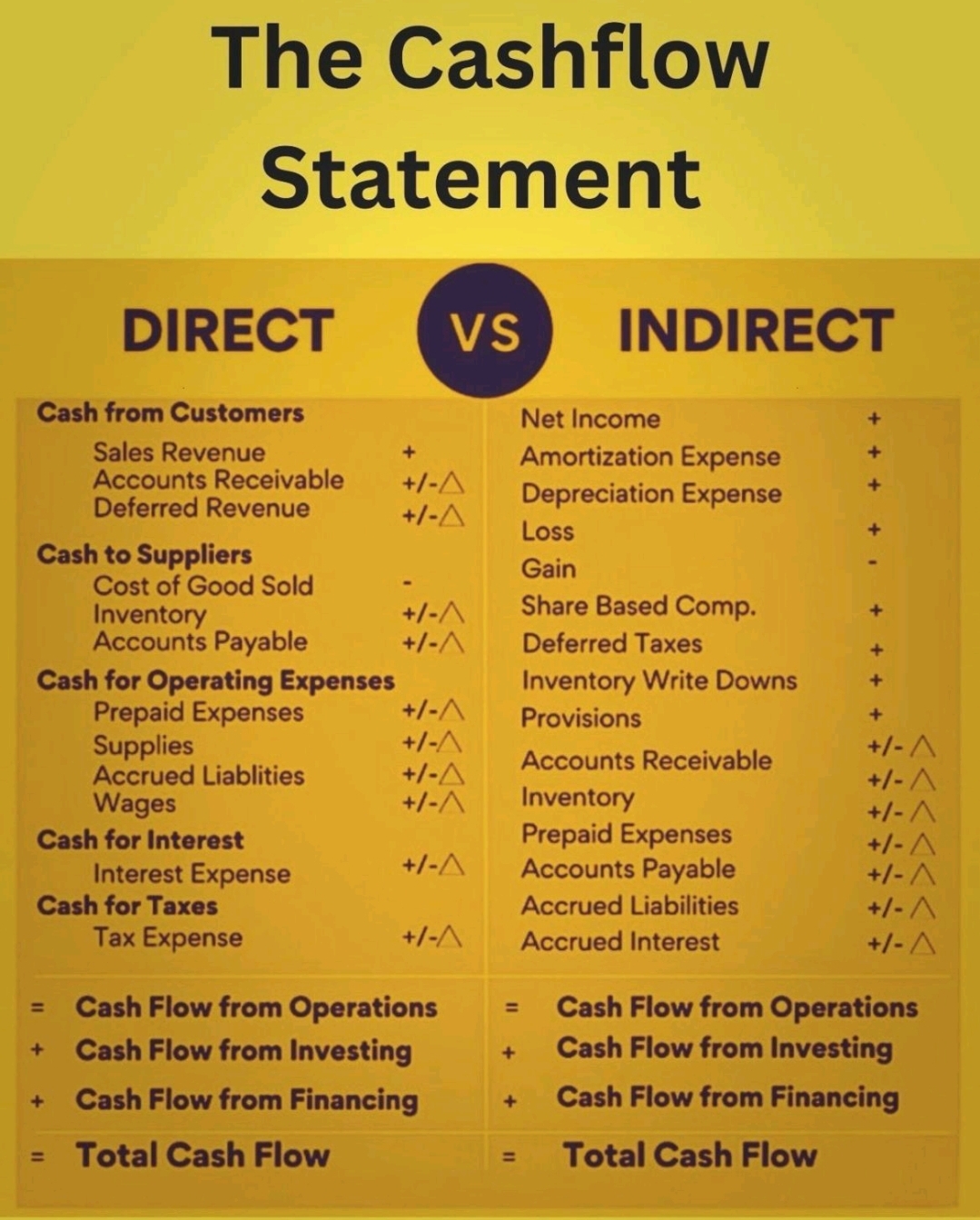Steps to Prepare a Cash Flow Statement
The preparation of a Cash Flow Statement (CFS) involves classifying cash inflows and outflows into operating, investing, and financing activities. It can be prepared using either the Direct Method or the Indirect Method. Below are the steps for each method:

- Direct Method
In this method, cash receipts and payments are directly listed. The steps include:
Operating Activities:
- Identify Cash Inflows:
Cash received from customers (sales revenue).
Other operating receipts (refunds, etc.).
- Identify Cash Outflows:
Payments to suppliers for goods/services.
Payments for wages, rent, utilities, taxes, and interest.
- Calculate Net Cash Flow:
Subtract total outflows from total inflows.
Investing Activities:
Record cash spent on asset purchases (e.g., equipment, property).
Record cash received from selling investments or assets.
Financing Activities:
Include cash from issuing shares, borrowing loans, etc.
Deduct repayments of loans or dividends paid.
- Indirect Method
This method starts with net income (from the income statement) and adjusts for non-cash transactions and changes in working capital.
Operating Activities:
- Start with Net Profit/Loss:
Take the net profit from the income statement.
- Adjust Non-Cash Items:
Add back non-cash expenses like depreciation, amortization, or provisions.
Adjust for non-operating gains/losses (e.g., gain on asset sale).
- Adjust for Working Capital Changes:
Increase in current assets (e.g., inventory, accounts receivable) decreases cash.
Increase in current liabilities (e.g., accounts payable) increases cash.
Investing Activities:
Record cash spent or received from purchasing/selling long-term assets.
Include loans made to others or collections from loans.
Financing Activities:
Record proceeds from issuing equity or debt.
Deduct repayments of borrowings and dividends.
Final Steps
- Summarize Cash Flows:
Combine net cash flows from operating, investing, and financing activities.
- Calculate Net Cash Flow:
Add all activities to get the net increase/decrease in cash.
- Reconcile with Opening Cash:
Add the net cash flow to the opening cash balance to get the closing cash balance.
Example of Indirect Method
Operating Activities:
Net Income: $50,000
Add Depreciation: $10,000
Add Loss on Sale of Equipment: $5,000
Increase in Accounts Receivable: $(8,000)
Decrease in Accounts Payable: $(2,000) Net Operating Cash Flow: $55,000
Investing Activities:
Purchase of Equipment: $(20,000)
Sale of Land: $15,000 Net Investing Cash Flow: $(5,000)
Financing Activities:
Loan Taken: $30,000
Dividend Paid: $(10,000) Net Financing Cash Flow: $20,000
Final Calculation:
Net Cash Flow: $55,000 (Operating) - $5,000 (Investing) + $20,000 (Financing) = $70,000
Add Opening Cash: $10,000 Closing Cash: $80,000
The prepared statement ensures clarity on cash generation and utilization, aiding financial decision-making.